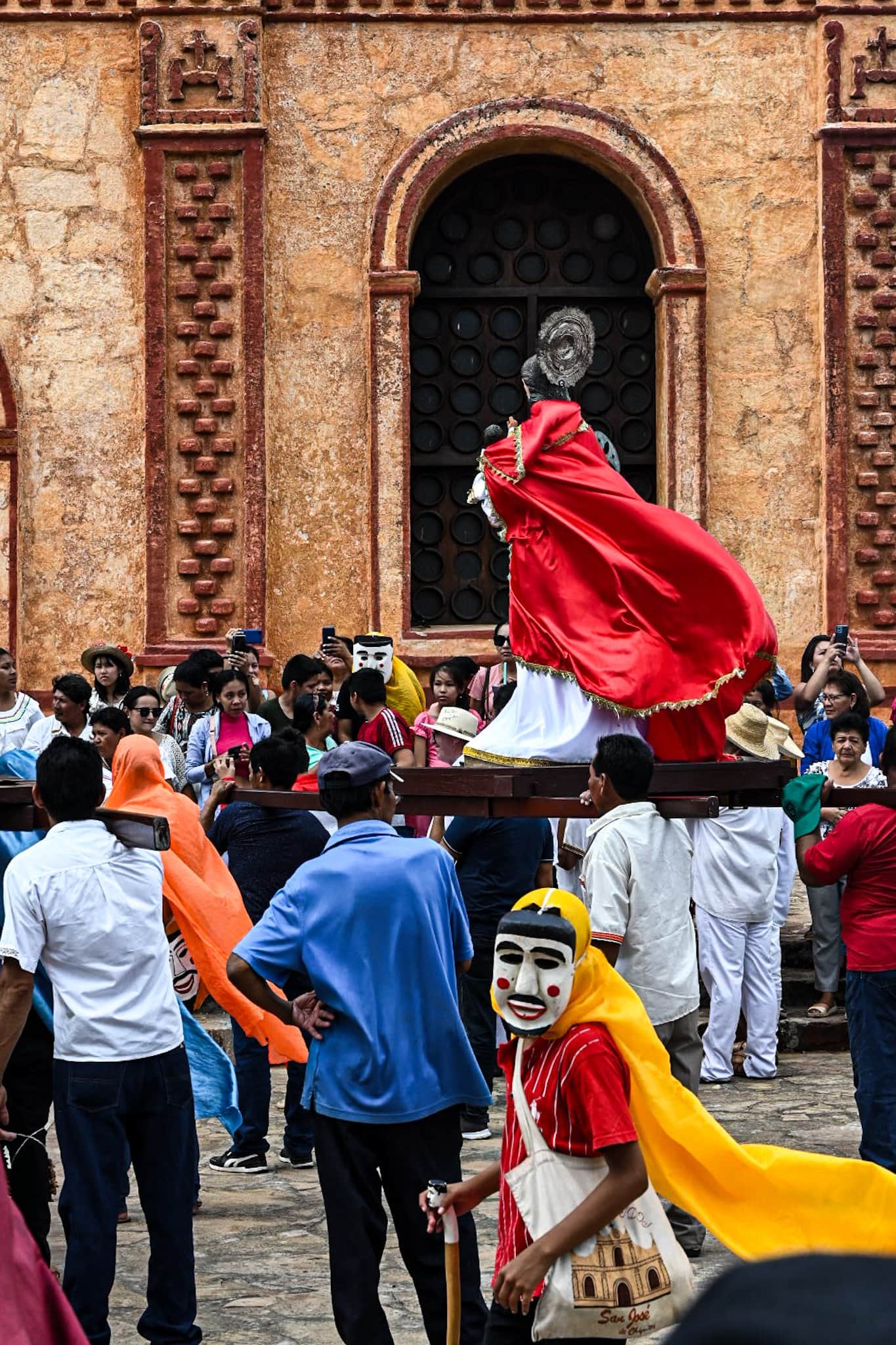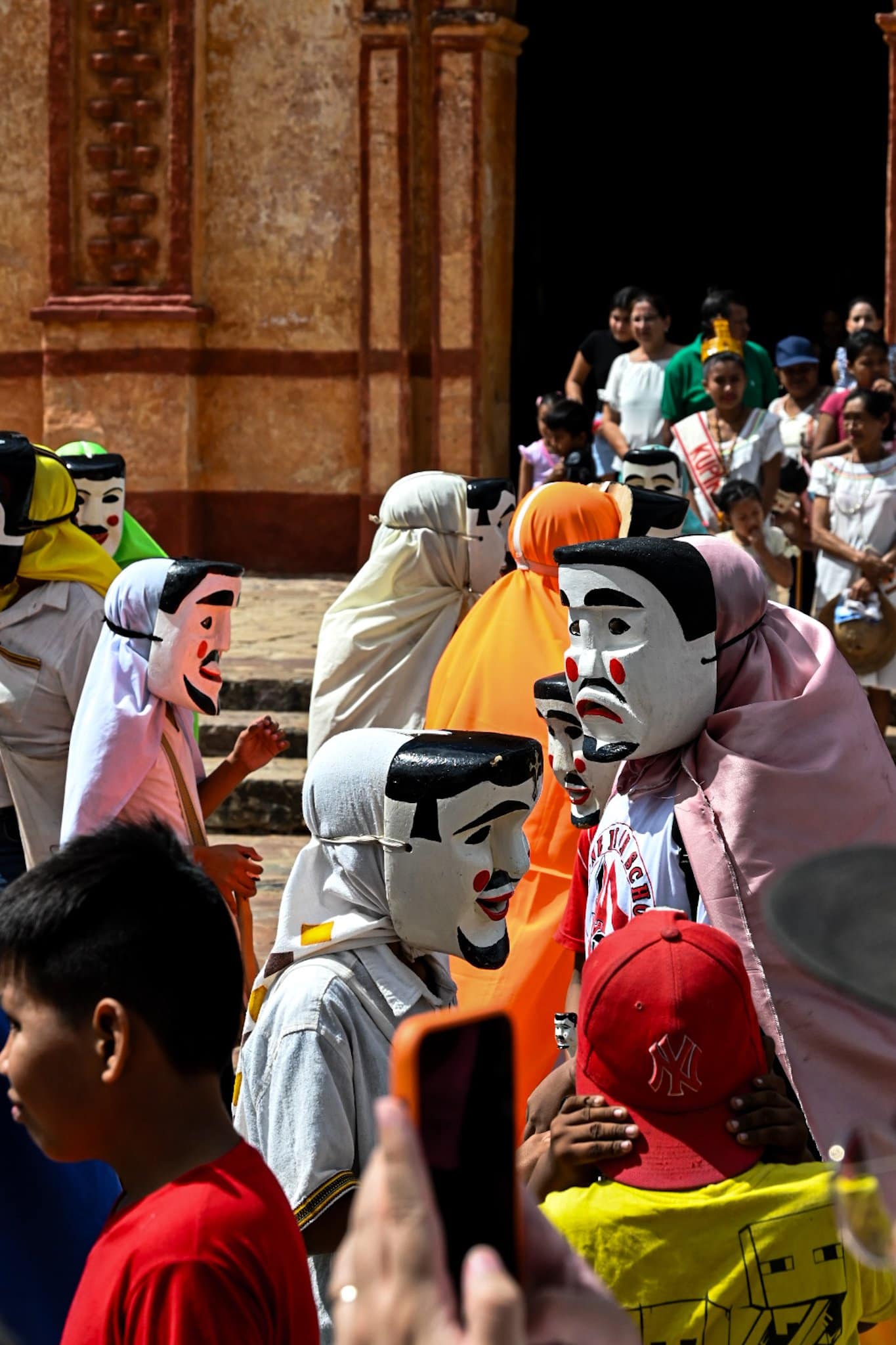Bolivia is rich. Not in a materialistic way. Unfortunately, she remains the poorest nation in South America. But in a much more holistic sense of the word. Bolivia is blessed with an abundance in traditions increasingly rare in today’s world. It is this incredible cultural wealth that ultimately elevates her from her peers and creates one of our planet’s most fascinating travel destinations.
Still virtually untouched from mass tourism (except for the world’s largest salt flat in Uyuni), Bolivia lays on an astonishing array of unique and divers customs best experienced at one of the many festivals celebrated throughout the year.
From the hedonistic excesses witnessed during the rowdy times of carnival to the sheer savagery yet, simultaneously, profound connection towards Pachamama emanating from the participants of tinku, and the flamboyant foolery displayed by the cheerful citizens of San José de Chiquitos, each celebration constitutes an intricate thread contributing to the many-faceted fabric of this colourful nation.
While Bolivia is abound with natural wonders, it is this raw authenticity manifested in the many cultural events happening across her vast lands that truly sets her apart and offers a beautiful glimpse into the country’s very soul.
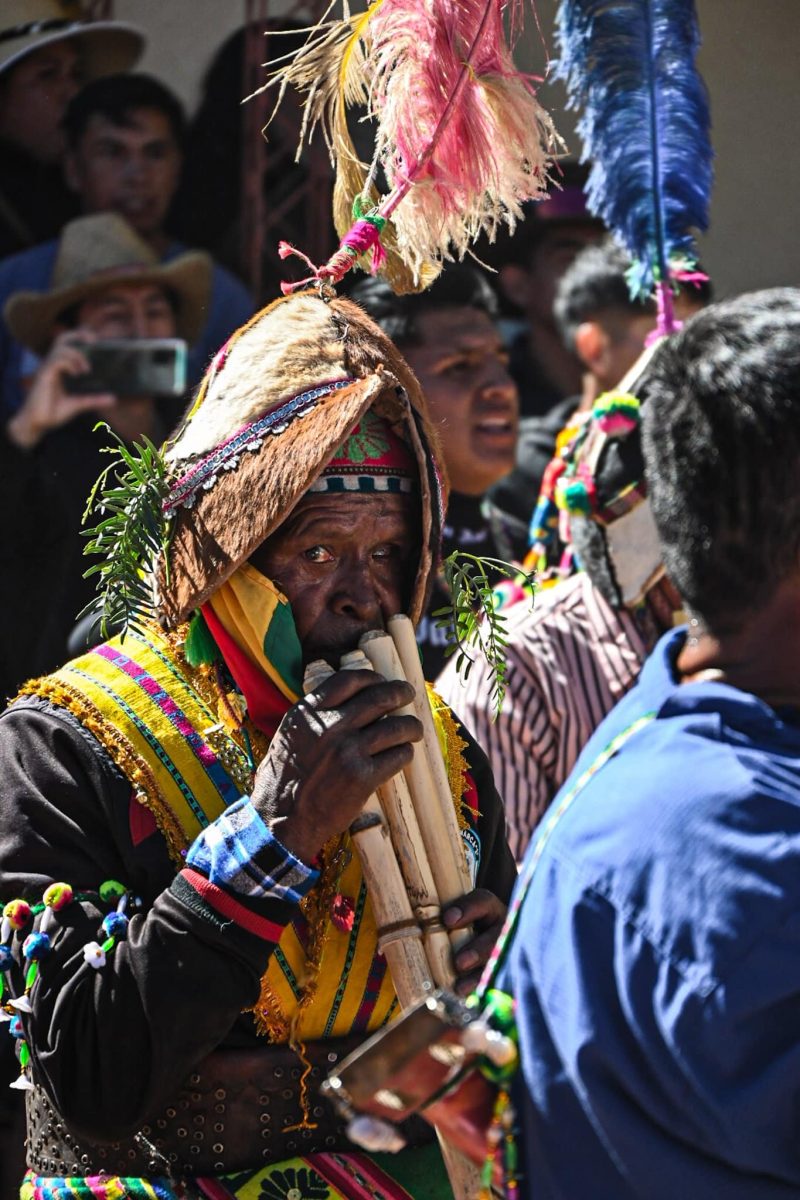
TINKU/FIESTA DE LA CRUZ
In early May, the scattered Aymara communities of northern Potosí province gather to embrace violence. In Macha they meet to mingle and dance, then to bleed in stance. It is a relentless ritual where savagery triumphs and brute force prevails, a ritual carried by the staunch believe of sacred sacrifice and the law of the strongest.
This is tinku, “gathering” in Quechua, Bolivia’s most extreme custom.
Believed to have originated during the times of the Qaraqara kingdom, the ceremonies were first performed to demonstrate the unique fighting abilities of these fierce warriors to foreign emissaries. In fact, so great was their reputation that when the region finally fell to the Incas, it is said that the winners were personally elected to serve in the emperor’s private guard.
However, over time, the competition slowly transformed into a religious ritual centred around sacral offerings. In the Andean cosmovision exchange is paramount for a harmonious relation between Pachamama (“Mother Earth”) and humanity, and thus the blood spilled during the fighting shall guarantee a successful harvest. For many, however, only death suffices and a tinku without at least one casualty is deemed a failure. This meant that, in the past, combatants often used stones or glass shards to deal maximal damage to their opponents. Though, these brutal practices have been prohibited in recent years and a police presence has been established to somewhat quench the violence, deaths do still occur.
And yet, the atmosphere remains tense but festive, at times almost cheerful, as participants, clothed in gorgeous garments and helmets crested with waving plumes, circle the town square in a constant stream of folkloric dance and traditional melodies distracting from the blatant brutality witnessed just a few metres away.
Tinku is not your typical festival. It is a merciless encounter with a world far apart from ours, a world where life and death take on a different meaning. It is a harsh reality fostered in a harsh environment; a reality not suited for everyone. But those who venture out to this remote corner of Bolivia will behold one of the country’s rawest and most authentic traditions.
When | first weekend of May
Where | Macha, Potosí
How to get there | There are a few trufis/colectivos going to Macha from Sucre on the day of the festival (not sure if this is a regular connection, though). Rides take roughly 3-4 hours and cost 50 BOB (May 2024). They leave from Calle Daniel Sánchez Bustamente (east of Monumento Tomas Katari).
Since space is limited, I suggest reserving a seat at least a day in advance.
Alternatively, you shoud be abel to get on a bus to Oruro and exit in Macha.
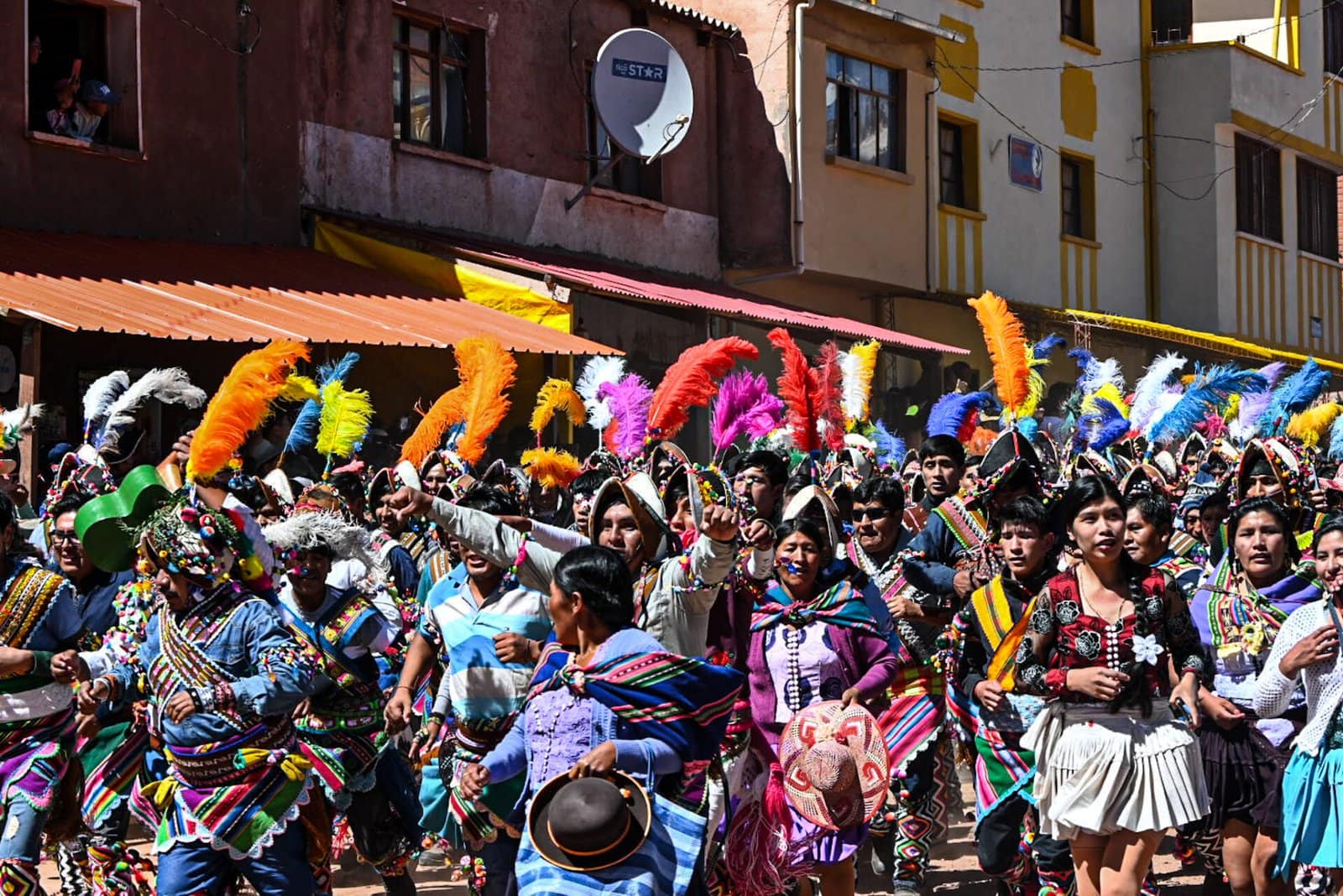
CARNIVAL
Though exuberantly celebrated by Christian communities around the world, in Latin America carnival ascends to a different level of madness.
A grand fiesta often synonymously associated with the flamboyant festivities taking place in Rio de Janeiro (or Brazil in general), once a year, Bolivia too throws on her most extravagant costume and skittishly strides her streets in mischief and folly. This decadent debauchery reaches its colourful climax in the town of Oruro where Christian beliefs and ancient Andean traditions mingle to create a motley mix of old and new world customs and the country’s most famous street party.
In the tropical lowlands, the humid streets of Santa Cruz de la Sierra offer a less popular yet no less ludicrous alternative. As civility steps back and savagery takes the reins, for a few days, the music-filled streets of Bolivia’s second city turn into joyful bedlam, much more akin to the crazy celebrations in neighbouring Brazil. In a wild world of water bombs, black tar paint, and foam-quantities rivalling those of a Turkish hammam, you will certainly get wet, definitely dirty, but you will have a bloody brilliant time doing so.
However, if you’re looking for a more intimate and less hectic affair, consider spending carnival outside the large urban centres to discover unique local customs associated with this exciting time of excess prior to the abstemious days of Lent. On the holy steps of the beautifully restored Jesuit church in Santiago de Chiquitos, for instance, the pueblo’s naughty boys and girls receive a good ol’ spanking to punish them for their wicked deeds accumulated in the previous year. Of course, the bizarre spectacle is all in good fun and no bums are harmed during this jovial process.
Thus, propelled by the carnival spirit, before long, Santiago’s bands continue their jolly ways and chicha flows freely once again.
When | days leading up to Ash Wednesday (between 4. February and 10. March; dates differ each year depending on Easter Sunday)
Where | all over the country, however, specifically in Oruro and Santa Cruz de la Sierra
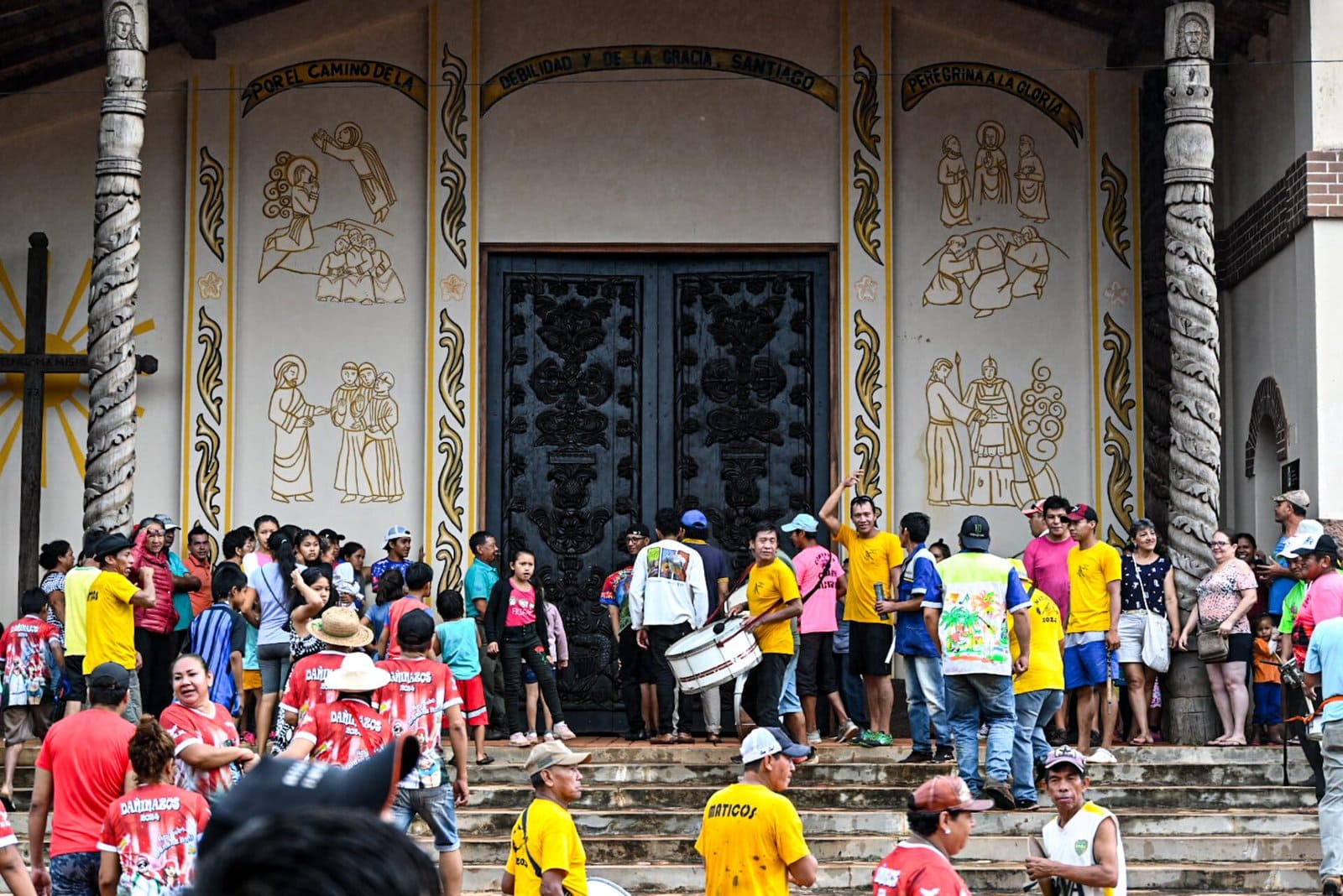
GRAN PUKARA/PUJLLAY
Once a year, the Yampara people of central Chuquisaca congregate in the historic town of Tarabuco to mark two special occasions: the festivals of the Gran Pukara and Pujllay; one an annual appeal for agricultural abundance, the other a proud celebration of liberty won in bloody conflict.
The pukara is a unique altar hung with various produce such as seasonal vegetables and fruits, bottles of chicha (an alcoholic beverage made from maize), canned food, and even entire cow parts. Erected in veneration of Pachamama, the pukara is both a beautiful symbol of gratitude by the people towards Mother Earth, as well as a plea for bountiful harvest and rich soil.
Rising to an astonishing height of 13 metres (this magnitude is supposed to be topped annually), at the end of the ceremony, the offerings are distributed among the participating communities and are meant to be duplicated the following year (i.e., if you take five apples, you should return with ten a year later).
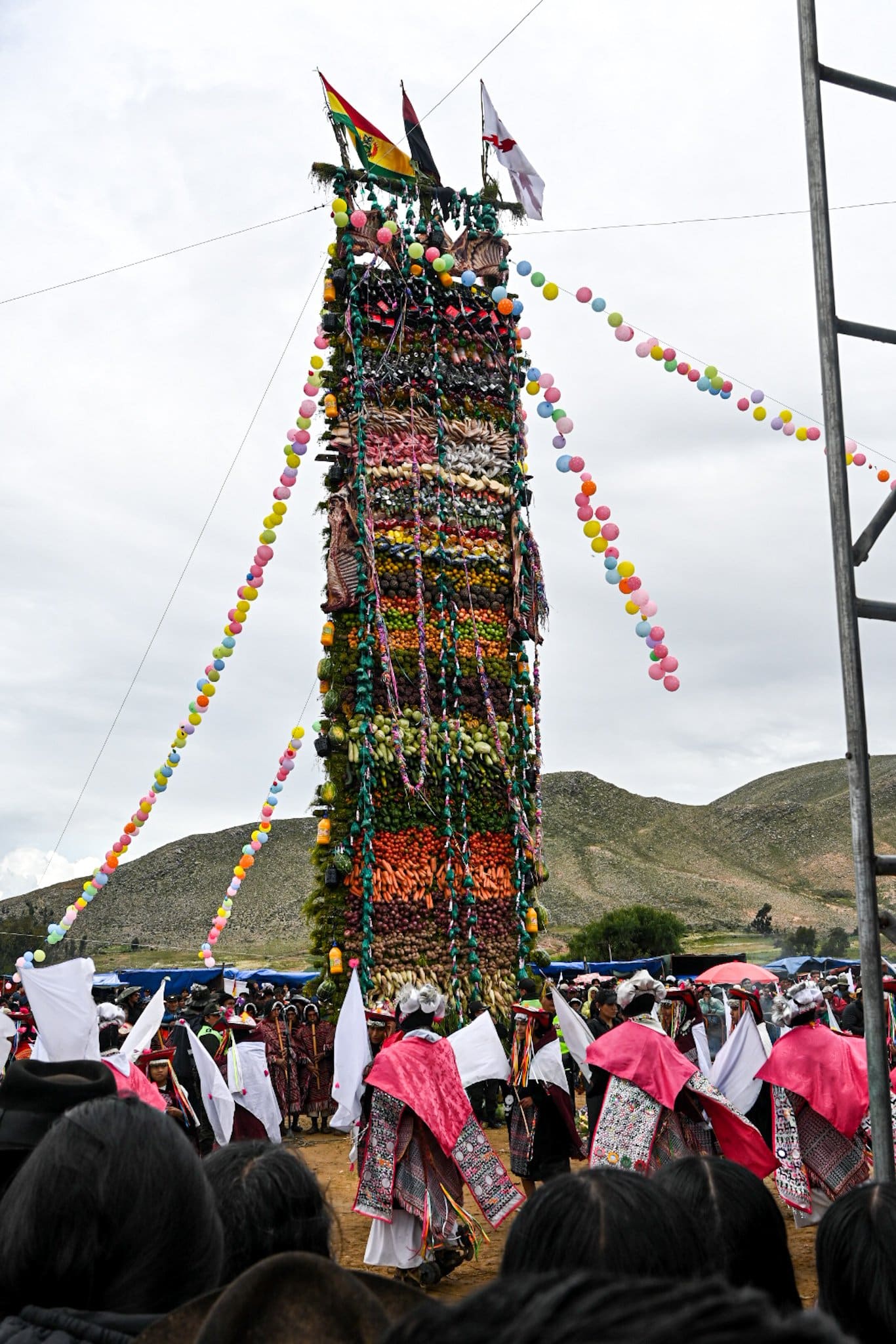
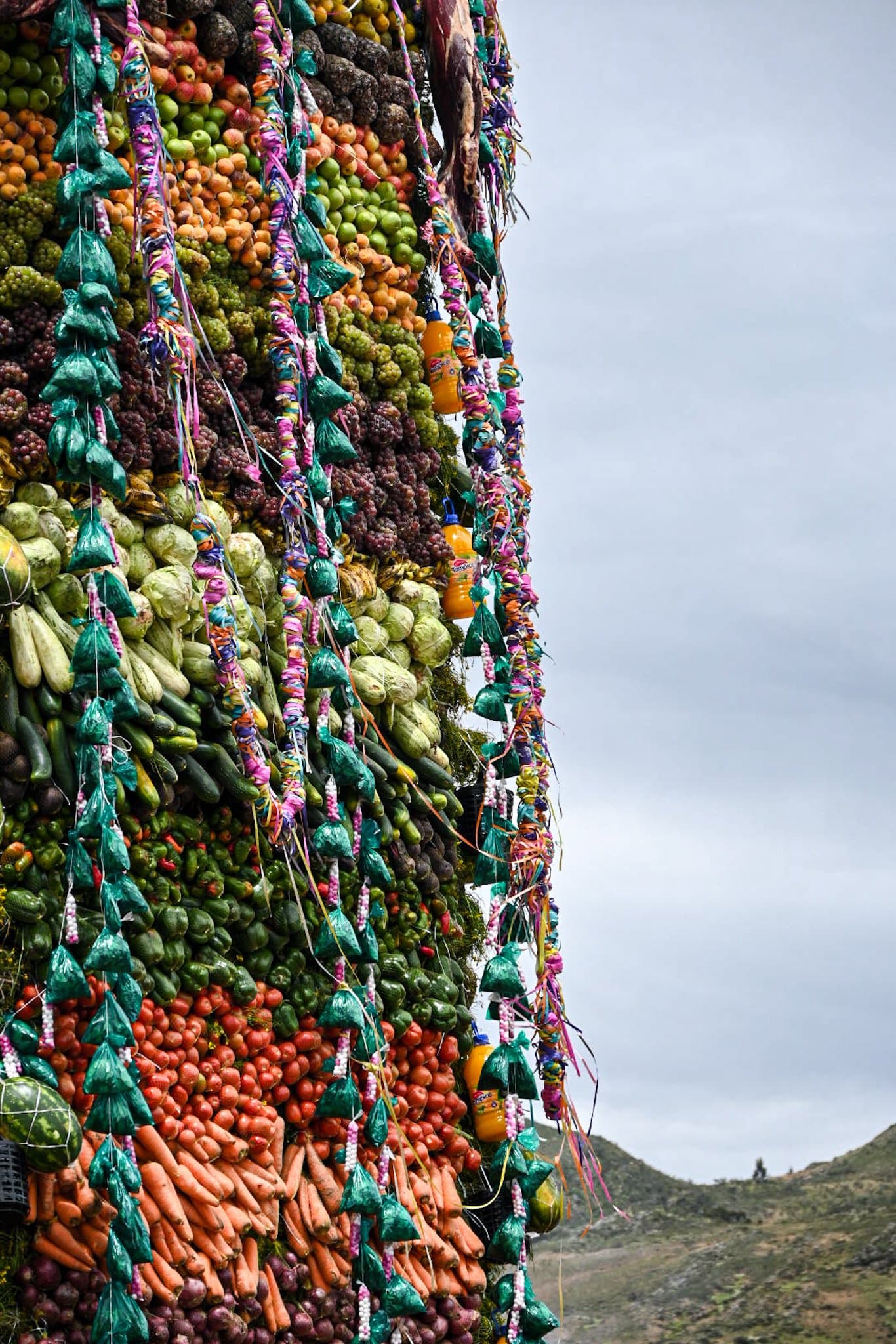
Pujllay, on the other hand, translates to “play” or “dance” in Quechua and alludes to clouds/blossoms being carried by the winds come the end of rainy season thus signifying the beginning of harvest. The festival not only takes place when yield is most abound but also coincides with the final days of carnival adding to the jovial and carefree atmosphere .
Equally important, the festival commemorates the Battle of Jumbate, a brutal clash between indigenous guerillas and Spanish forces on 12th March 1816 as part of the Bolivian War of Independence that resulted in the complete annihilation of the royalist forces and the subsequent liberation of Tarabuco from the century-long yoke of Spanish occupation. Following their resounding victory, these merciless warriors are said to have then feasted on the hearts of their slain adversaries, a savage deed henceforth immortalised in name and song, as they were now called Sonq’o Mikuy, the “heart eaters”.
Clad in festive costumes boasting intricately woven cloth and distinctive helmets (a reference to the Spaniards), participants will thus migrate towards the gran pukara to tirelessly dance around the towering altar. The dancers are said to represent Tata Phujllay, diabolical deity of carnival, whose spirit is evoked through the tantalising tunes of the pinkillo (a long flute instrument), inspired by the god’s own melodies permeating the surrounding rivers and valleys, as well as the strong stomping of feet attributed to Tata Phujllay’s overflowing energy.
When | third Sunday of March
Where | Tarabuco, Chuquisaca
How to get there | Trufis/colectivos run daily between Sucre and Tarabuco. The ride takes roughly 2 hours and costs 10 BOB (March 2024). Minibuses leave at the corner of Tupaj Yupanqui and Avenida Germán Mendoza (“Parada a Tarabuco” on GoogleMaps and maps.me).
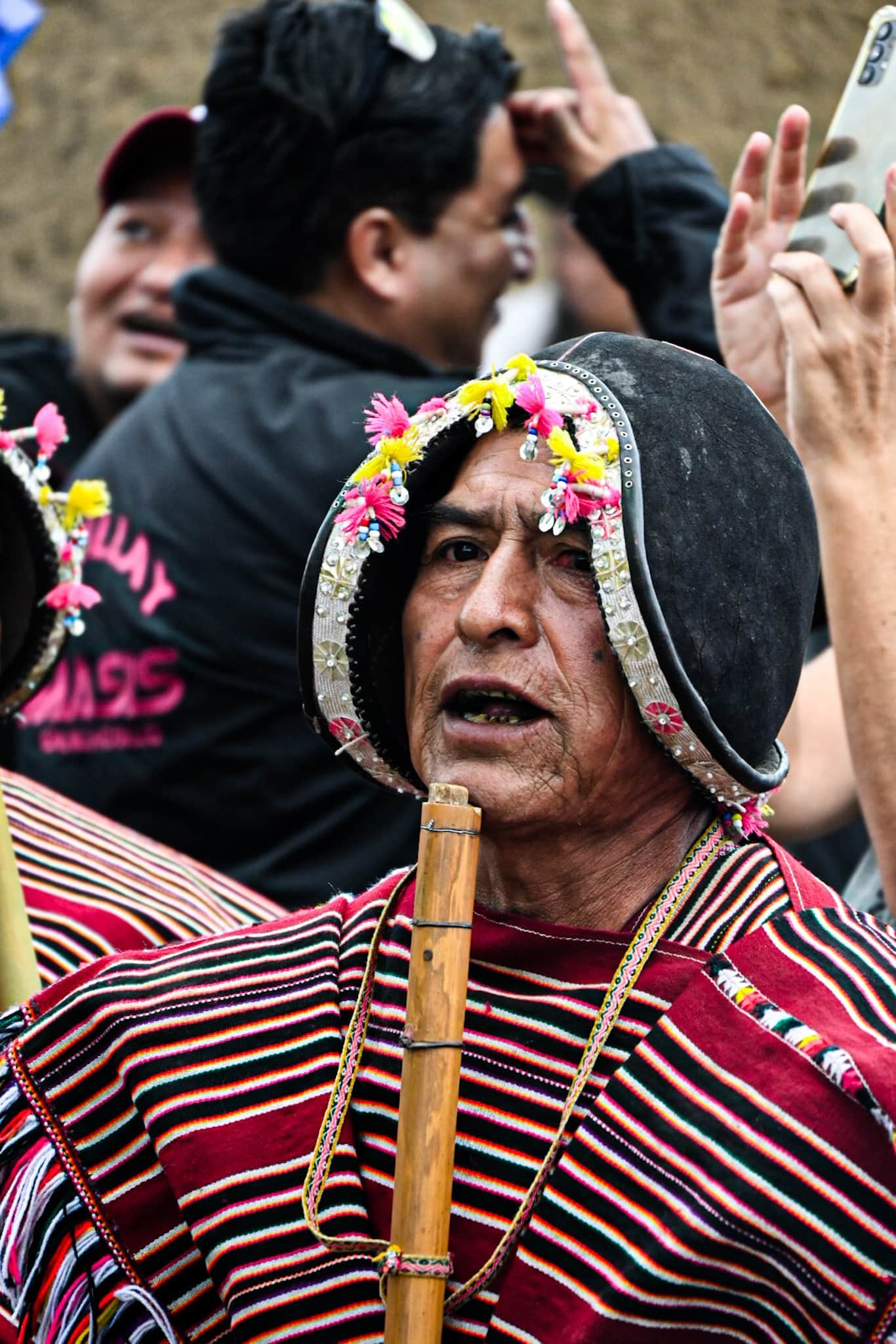
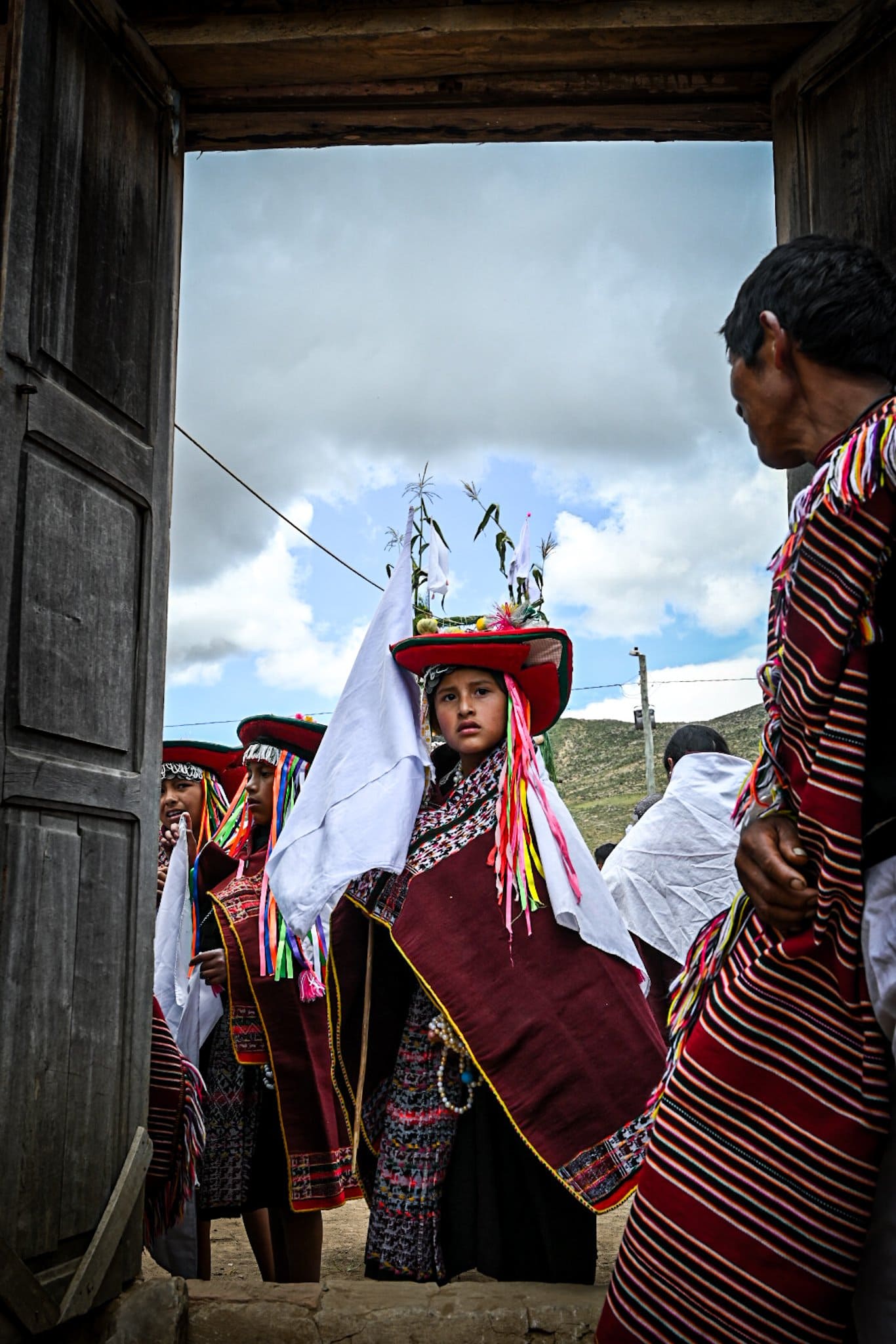
INTERNATIONAL RENAISSANCE AND BAROQUE MUSIC FESTIVAL
When Jesuit settlers first arrived to the verdant swaths of southeastern Bolivia in the late 17th century, a region that came to be known as Chiquitanía (named after the indigenous Chiquitano people), on their sacred voyage, these pious missionaries carried with them much more than just the word of God.
Well versed in the then contemporary baroque music, with these holy men travelled the mesmerising melodies of renaissance Europe and soon they manifested in the minds of the indigenous communities who quickly adopted these novel sounds. Even after the Jesuits were expelled from their promised land in 1767 their musical legacy lingered, eagerly kept alive by the local population. It wasn’t until the 1990s, however, that the real extent of this magnificent heritage was discovered. During renovation works in the former missions emerged thousands of compositions hailing from the talented quills of both European, as well as native musicians.
Thus, to preserve this outstanding cultural wealth and present its beauty to a broader audience, the “International American Renaissance and Baroque Music Festival”, the largest of its kind in the world, has been held biennial since its inception in 1996. Celebrated across the entire region of Chiquitanía and over a solid period of 10 days, the festival not only serves as a wonderful opportunity for travellers to experience this ancient artform performed in the lustrous halls of the Jesuit missions but to uncover the fascinating fabric of chiquitano culture (a beautiful blend of Jesuit, Spanish, and indigenous traditions), as well.
When | every two years (next 2026); traditionally at the end of April (19.-28. April, in my case)
Where | Concerts take place all over Chiquitanía (you may find the schedule online)
How to get there | Trufis/colectivos run daily between Santa Cruz de la Sierra and San José/the various Jesuit missions from Terminal Bimodal-Santa Cruz. The ride to San José (the regional capital) takes around 4 hours and costs 60 BOB (April 2024).
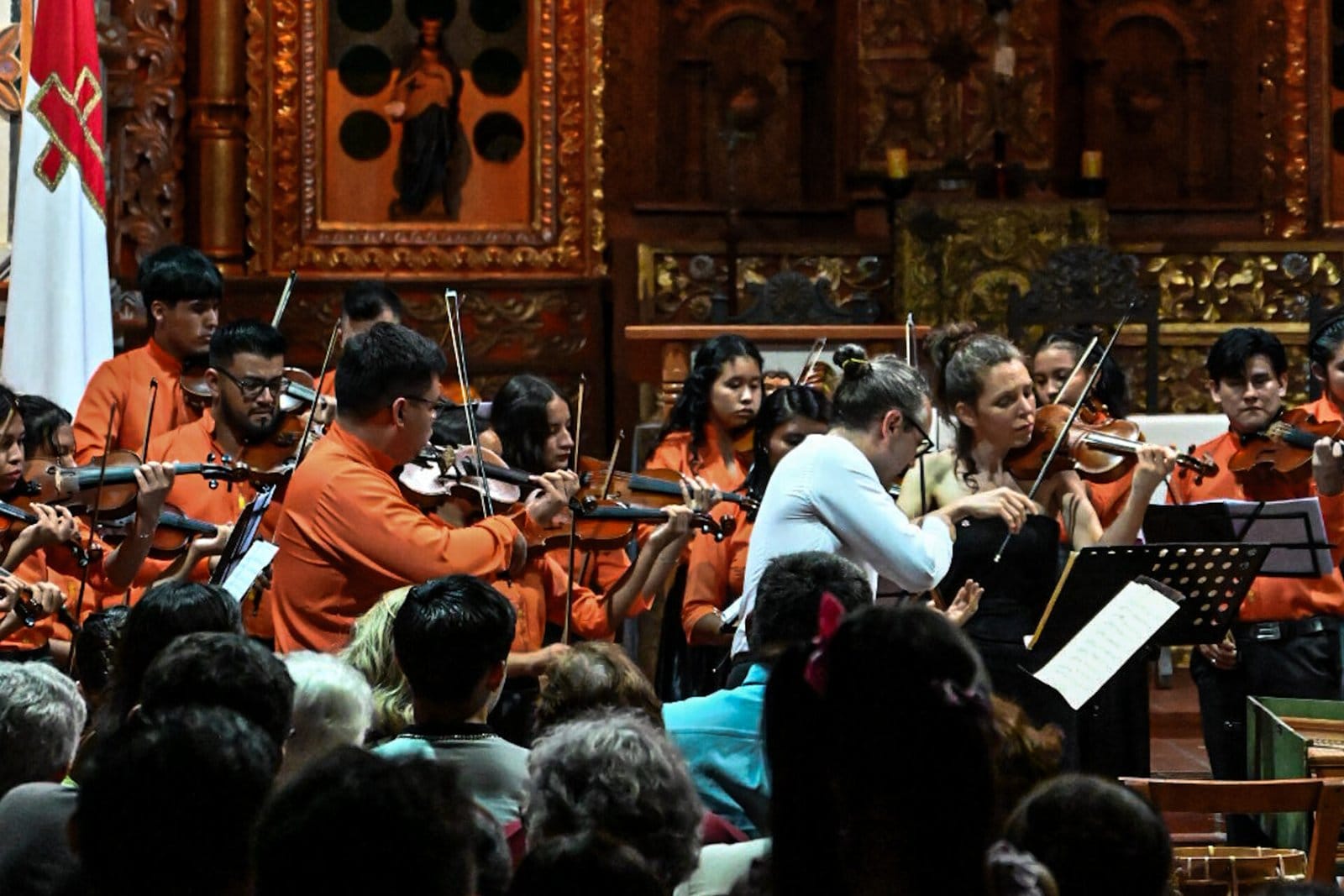
FIESTA PATRONAL DE SAN JOSÉ DE CHIQUITOS
Coinciding with International Worker’s Day, San José de Chiquitos also celebrates the Fiesta Patronal, a colourful congregation in honour of the city’s founding, and her patron saint San José Obrero. Originally, the town was established on 19th March 1697, though, the festival was later moved thus not to fall within Lenten period and allow for a much more jovial atmosphere.
Although festivities reach their peak on 1st May, the event takes place for a full four days starting on 29th April and ending on 2nd May, featuring a wide variety of entertainment in the process, such as concerts, traditional dance performances, artisanal markets exhibiting beautiful local crafts, as well as the annual coronation of Miss San José.
The true spectacle, however, commences once the abuelos come dancing.
Motley and mischievous, they stride onto the scene in flamboyant fashion, colourful cloths floating behind their swift steps. Tirelessly driven by their innate folly, they move to the beating rhythm of a drum, their grimaces staring motionless yet full of emotion, static images of human impulse caught brilliantly by their creators.
They are the “grandfathers”, strange characters from the rich chiquitano culture present in this little-known corner of Bolivia. Once meant to confront the waring white man infiltrating the lush jungles of Chiquitanía, these wonderful wooden masks still represent the Spanish conquistadors but have since moved from a place of mockery to a place of reverence towards the town’s patron saint.
In a country already blessed with cultural abundance, the foolishness and resplendence of the abuelos still stands out as one of Bolivia’s most gorgeous and unique customs.
When | 1. May (festivities start 29. April and end 2. May, however)
Where | San José de Chiquitos, Santa Cruz
How to get there | Trufis/colectivos run daily between Santa Cruz de la Sierra and San José from Terminal Bimodal-Santa Cruz. The ride takes around 4 hours and costs 60 BOB (April 2024).
